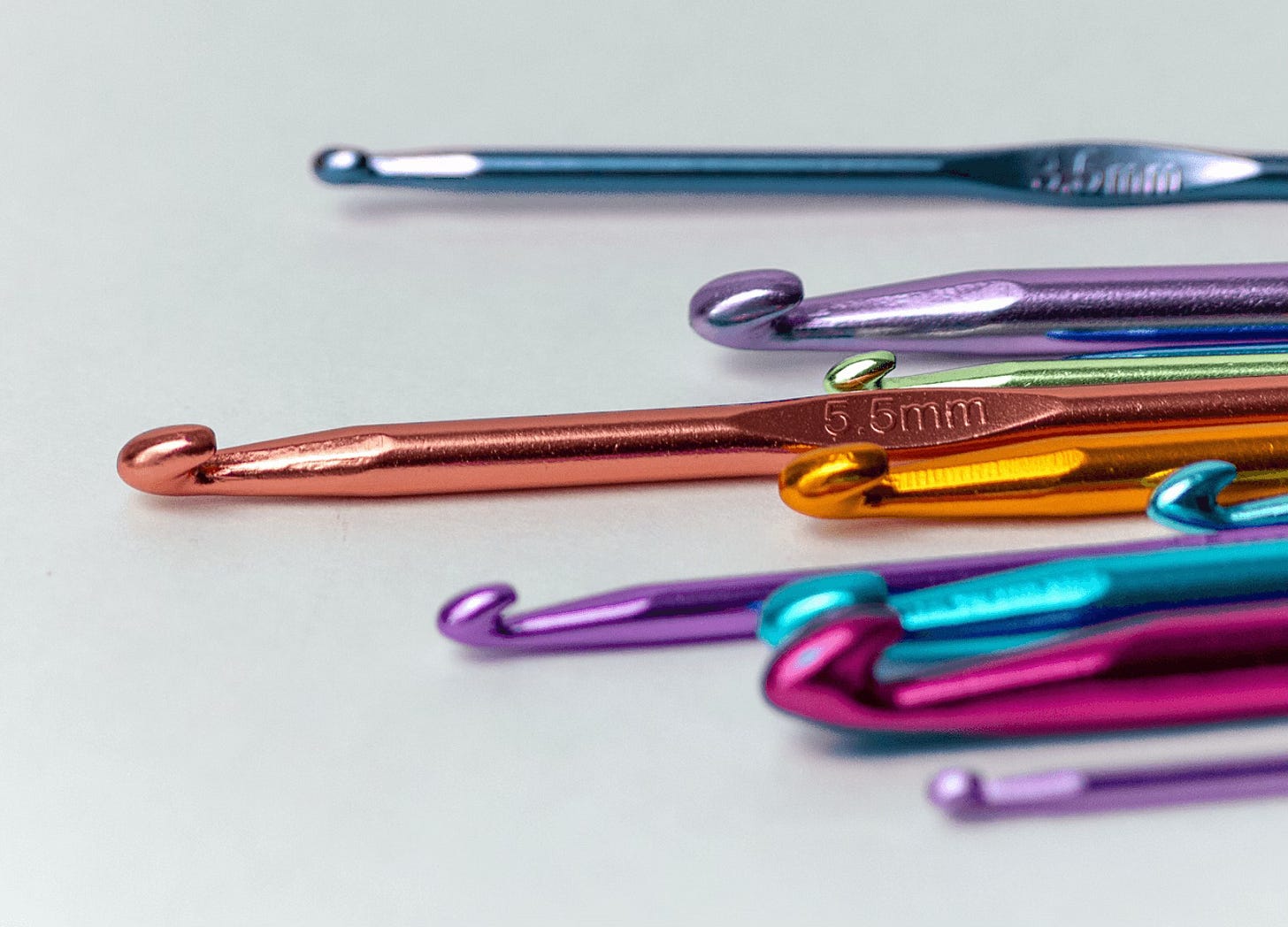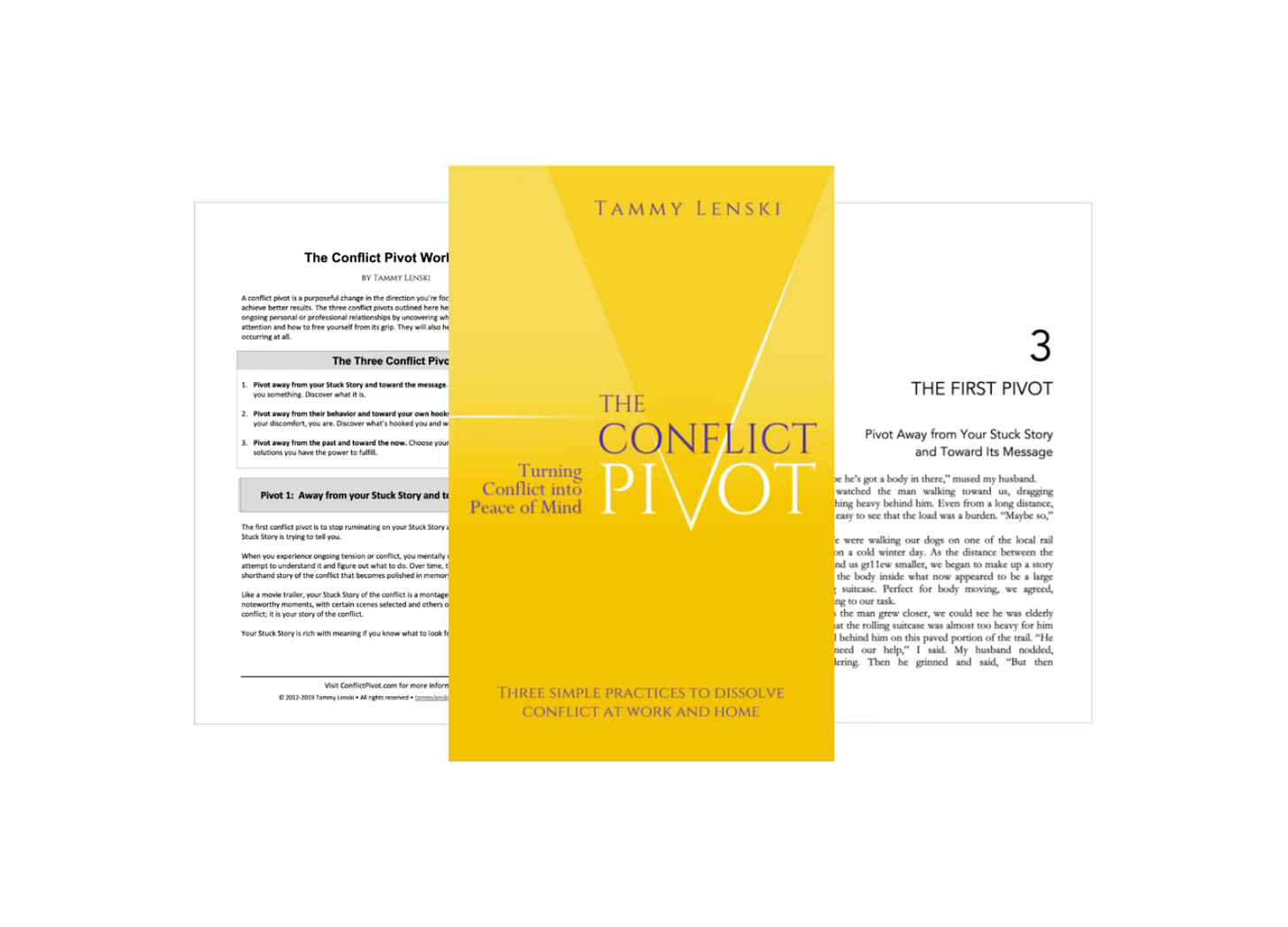Discover what you're really fighting about
Our conflict hooks influence the conflicts we get into, how we react, and how stuck we get
Part 2 of 4: Part 1 | Part 3 | Part 4
📣 I shared some of today’s material in a post last year. I’ve built on that material for our deep dive into Stuck Stories and other useful ideas from The Conflict Pivot.
It was the first day of high school journalism class for American journalist and filmmaker Nora Ephron. The subject of the day was how to write a lede. The teacher began with a set of facts:
“Kenneth L. Peters, principal of Beverly Hills High School, announced today that the faculty of the high school will travel to Sacramento on Thursday for a colloquium on new teaching methods. Speaking there will be anthropologist Margaret Mead, educator Robert Maynard Hutchins, and several others.”
Then Mr. Simms asked the students to write the lede for a news story based on those facts. The lede is meant to catch the reader’s interest and draw them into reading the rest of the story. It should concisely convey the main point of the story.
"Burying the lede" means beginning a story with secondary details and postponing the important points until later in the story. It's considered poor journalistic form because it can cause the reader to lose interest before they get to the story’s point.
Ephron and her classmates typed away, constructing ledes. They handed in their attempts, which all relayed more or less what the teacher had dictated, many in the reverse order — “Margaret Mead and Robert Maynard Hutchins will address the faculty…”
Mr. Simms smiled. “The lede to the story is,” he said, “There will be no school Thursday.”
We bury the lede in conflict, too. As we try to understand what happened, figure out what to do, and position ourselves to be ready for next time, it’s natural to focus on things like how they insulted or hurt us, how frustrated they made us, how unfair it is, or how we could or should have responded.
It’s natural to think about these things, but they stop short of a core question:
What are we really fighting about?
When we answer this question well, we have our conflict’s lede.
The role of our Stuck Stories
When we replay conflicts in our minds or recount them to others, we don’t accurately review every moment. Instead, we create a selective narrative—a montage of emotionally charged scenes that feel truer each time we repeat them. These narratives, our Stuck Stories, are our personal movie trailers of the conflict.
The problem with Stuck Stories is that we treat them as though they are The Truth About What Happened when they are a partial truth we have constructed.
But our Stuck Stories have a vital upside: One way to understand conflict is that it occurs when something important feels threatened or insulted. The things we dwell on in our Stuck Stories are hints about a fundamental source of our unease.
Conflict hooks
When we get angry, we may say that someone “pressed our buttons” or “triggered” us, implying that the impetus for our reaction was outside of us and perhaps even deliberately caused by someone else. Terms like these minimize our agency, our sense of control over our actions and destiny.
In 2007, I coined the term “conflict hook” to remind us that the source of our discomfort is often internal and that we have the capacity to free ourselves from what has grabbed hold of us.
A conflict hook is a part of our identity that has become snagged by a perceived insult or threat to the way we see ourselves.
You’re familiar with hooks: Hooks for hanging coats, hooks for fishing, hooks for crocheting, hooks in computer programming, hooks in barbed wire. They share a kindred function: To intercept and snag, to catch and hold.
Conflict hooks follow the same idea. There we are, going about our day, and suddenly we’re caught on something. Maybe it was a deliberate attempt to insult us, or perhaps there was no ill intent at all. Nevertheless, it caught our attention and prompted a reaction — it hooked us.
The six classic conflict hooks
Decades ago, intercultural conflict and communication theorist Dr. Stella Ting-Toomey researched the ways we negotiate face during conflict. She proposed a helpful taxonomy of six core identities that can feel threatened during conflict. Translated into conflict hook language, they are:
Competence: We get hooked when we perceive someone questioning our intelligence or skills.
Inclusion: We get hooked when someone appears to exclude us in some way (from a group, an event, a committee, etc.) or implies we’re not a good companion.
Autonomy: We get hooked when someone appears to be trying to control us, impose on us, or threaten our self-reliance.
Reliability: We get hooked when we perceive someone questioning our trustworthiness or dependability.
Integrity: We get hooked when someone appears to be questioning our moral values or integrity.
Status: We get hooked when we perceive someone threatening or disparaging our tangible or intangible assets, including power, position, economic worth, and attractiveness.
Why conflict hooks matter
When we conflict with someone, we negotiate not just the presenting problem of the disagreement, but also “face.” Face is about how we see ourselves and want others to see us. When we “lose face,” something at the core of our identity feels threatened or insulted, and we experience emotions like embarrassment, shame, humiliation, and anger.
Awareness of conflict hooks help us figure out why a conflict is plaguing us.
Familiarity with conflict hooks helps us fulfill three conflict resolution tasks essential to healthy dynamics:
Discussing what we’re really fighting about, allowing stubborn recurring issues to get resolved once and for all.
Staying emotionally agile because we can learn to manage our conflict hooks and keep our balance better.
Being mindful that even when someone is acting unreasonably, they still have reasonable human needs and desires. I wrote in The Conflict Pivot,
Once you’re aware of conflict hooks, you’ll begin noticing the shadow of their presence throughout your day. You’ll notice that a testy board member is feeling vulnerable about his place on the board (competence or status hook). You’ll notice that your elderly mother, long opposed to selling her home and moving to an assisted living facility, is grappling with the way such a relocation would collide with her view of herself as independent (autonomy hook) and capable of taking care of herself (competence hook). Your ability to see beneath the testiness, beneath the apparent obstinacy, beneath the resistance, will remind you that even when people seem unreasonable, underneath they are usually still reasonable human beings with a normal desire to protect what matters most to them.
TAMMY LENSKI, THE CONFLICT PIVOT
Keep in mind
We can find ourselves hooked whether or not the threat or insult is real. We can get hooked when we perceive a threat or insult to our identity, whether or not the other person intended to convey it. For a story about how a perceived insult almost made me angry about something that turned out to be completely benign, read my Mobil Station Story.
We can experience face loss related to any of these hooks, though many of us tend to have one or two dominant hooks. And because we don’t all share the same dominant hooks, what bothers me may not cause you a passing thought. What we hold dear about ourselves differs from person to person.
And when we’re both bothered by something said or done by another, we may be bothered because of different hooks. For instance, one of my dominant conflict hooks is Competence, while my husband’s is Autonomy. Years ago, my brother came to the old house we’d purchased to help us rebuild the rotted porch railings. There was a moment when my husband and I struggled to put a section of railing together, and my brother called over sharply, “Don’t try to do it that way! Do it the way I showed you!”
What message did my husband hear? “Do everything my way!”
What message did I hear? “You’re doing it wrong!”
Over to you
Some journaling / conversation / comment prompts for your consideration:
What does it look and feel like when you get hooked by a conflict?
When you look at the list of six classic conflict hooks, do any of them stand out as ones you’ve experienced in yourself? Do you think you have one or two that are dominant?
How can you use this information to make sure you’re addressing what you’re really fighting about?
How can you begin to notice you’re getting hooked before you’re good and snagged?




What a succinct, clear article, thank you! You make it sound easy, when I would think that this is the core for most everything. Very helpful. Lots to think about.
Such an important question--what is it that matters? As you so clearly point out, unless we understand our needs or hooks and those of others, we can get stuck in a spiraling conflict with understanding and compassion decreasing and fear and anger increasing. Thank you for this!